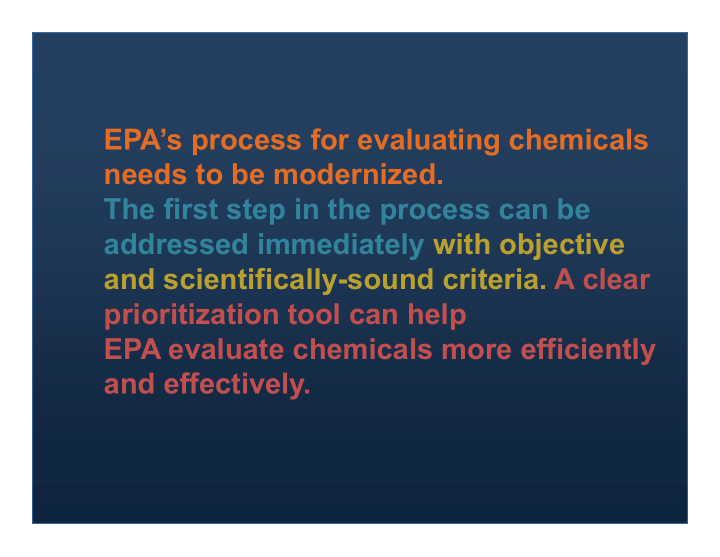



EPA’s process for evaluating chemicals needs to be modernized. The first step in the process can be addressed immediately with objective and scientifically-sound criteria. A clear prioritization tool can help EPA evaluate chemicals more efficiently and effectively.
EPA’s process for evaluating chemicals needs to be modernized.
The first step in the process can be addressed immediately... 1. High priority chemicals How should high priority chemicals be chosen? Is there a method?
...with objective and scientifically-sound criteria.
A clear prioritization tool can help EPA evaluate chemicals more efficiently and effectively.
Individual criteria used to determine a chemical’s ranking HAZARD FACTOR Human health hazards such as potential links to cancer EXPOSURE FACTOR Other factors such as whether it is formulated in children’s products or HAZARD FACTOR detected in biomonitoring programs Potential environmental effects EXPOSURE FACTOR Whether it persists or accumulates in the body or the environment or it is naturally eliminated EXPOSURE FACTOR A chemical’s industrial, commercial and consumer uses
Chemical ranking based on individual criteria low medium low medium medium high high low medium medium high high hazard
EPA can apply additional factors and professional judgment to determine order of review within priority groups Chemicals in biomonitoring samples Chemicals in children’s products TRI emissions International risk management action low priority high priority
The overall success of TSCA relies on a clear and credible prioritization process.
Recommend
More recommend